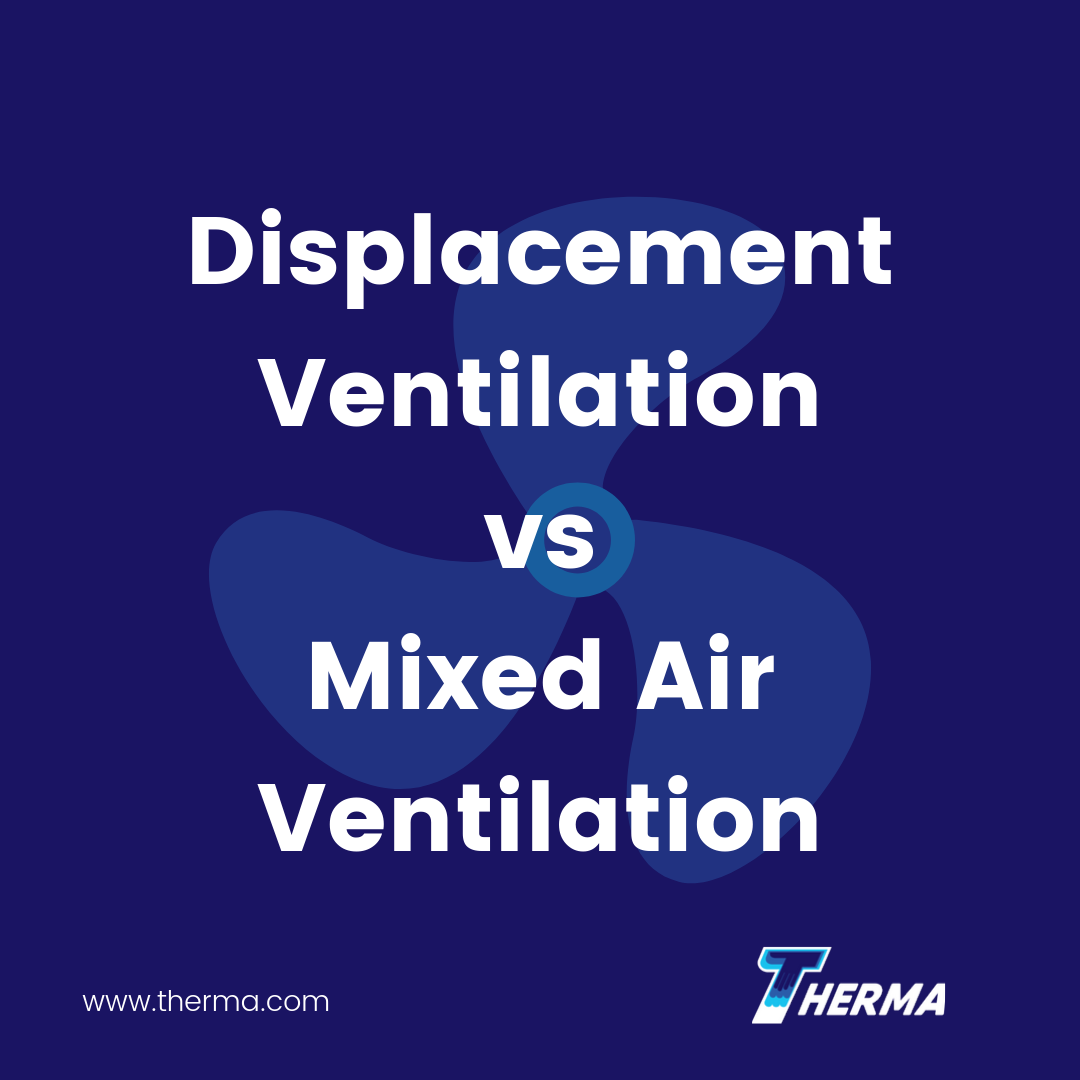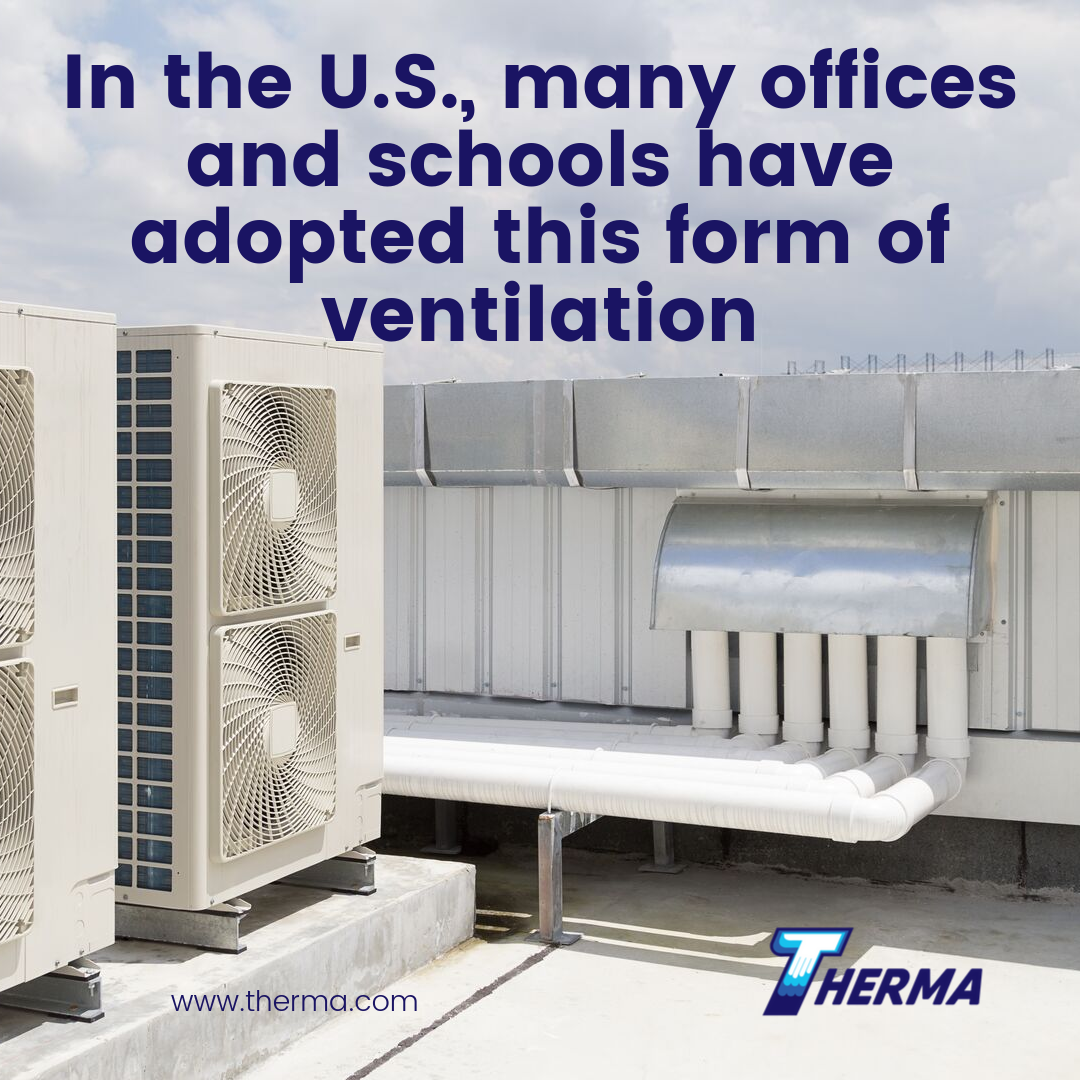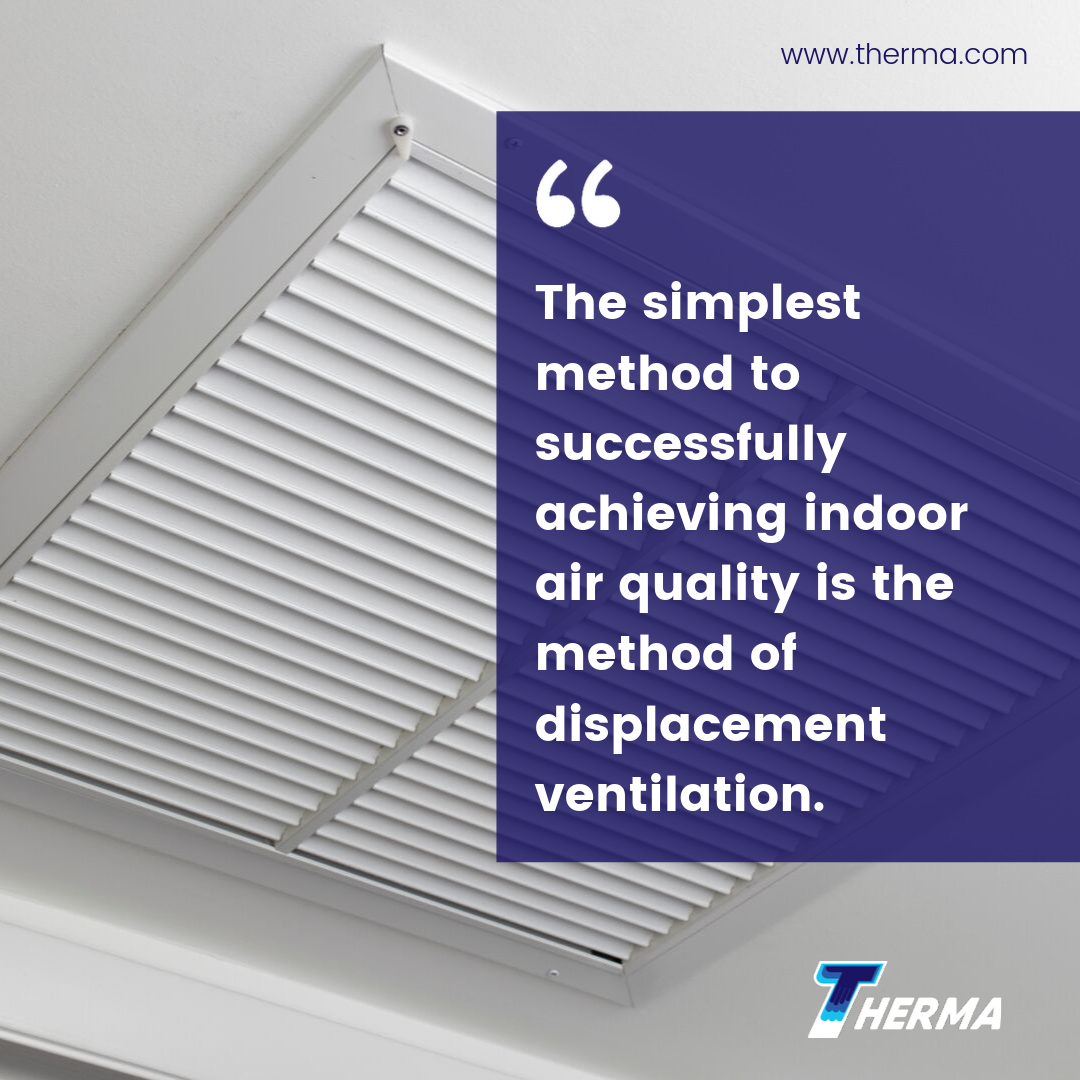Understanding Displacement Ventilation and its Optimization
By Freedom Ahn
In any structure, ventilation is a prime concern for the comfort and health of the occupants. Maintaining indoor air quality (IAQ) requires continually replacing air supplies inside a building. The simplest method to successfully achieving indoor air quality is the method of displacement ventilation.
What Is Displacement Ventilation?
Displacement ventilation allows incoming supply air to push older air away without mixing with it. In commercial or industrial settings, temperature differences are commonly present, and these differences allow a displacement ventilation system to be implemented in which fresh air replaces the stale air using simple buoyancy to drive the displacement process.
How Does It Work?
A large air diffuser (or more than one) can gently push the fresh air into the room, providing a steady flow of “new” air that continually pushes the warm, stale air up to the ceiling where it can exit through exhaust vents. The air doesn’t mix, but stays separate, meaning all light-as- or lighter-than-air contaminants are continuously removed.
Displacement Ventilation Versus Mixed Air Ventilation

These systems deliver a different result than mixed systems. With a displacement ventilation setup, the fresh air is introduced into the room at low velocity, allowing it to slowly but inexorably push the existing air in the room upwards. The level of contaminants in the room at lower levels is low, while contaminant-rich air near the ceiling is removed.
In contrast, a mixed air system simply pushes fresh air into the room at high velocity, forcing increased circulation and mixing the introduced air with the stale air to lower the concentration of contaminants. Mixed air is exhausted from the system at any level, and heated air is part of the mix, meaning cooling must be maintained across all air volume, not just the lower levels.
How Can It Be Optimized?
Displacement ventilation systems can be optimized using a Computational Fluid Dynamics (CFD) analysis that takes into account both required ventilation rates and cooling load density, as well as directional airflow, drafts and “plumes” that can affect the rate at which air rises in different locations within any given space.
The CFD analysis can help pre-construction teams determine where diffusers must be placed and how many are required to provide sufficient speed of air turnover, as well as defining optimal air-speed entering the room. An optimized displacement ventilation system can provide the added advantage of a cooling effect as heated air is removed from the room, delivering energy savings and improving HVAC operations.
When and Where Is Displacement Ventilation Appropriate?
This type of ventilation is most applicable to buildings with ceilings that are 9 feet high or higher. The higher the ceiling, the more heated waste air can be removed. Examples of real-world uses for displacement ventilation include:
- Offices and meeting or conference rooms
- School classrooms, gymnasiums, auditoriums and lecture halls
- Theaters, performance or exhibit halls, museums and indoor stadiums
- Lobbies and atriums
- Restaurants and cafeterias
- Casinos or indoor amusement galleries
- Airport terminals and train stations
- Shopping malls
Displacement ventilation is typically unadvisable for spaces with ceiling heights lower than 9 feet or spaces that are divided into cubicles or have other high-walled partitions that can impede airflow. Other concerns would arise for spaces in which hazardous chemicals are used, or where contaminants would be heavier than air, necessitating room air to be extracted at a lower level.
Benefits of Displacement Ventilation Systems
A displacement ventilation system has multiple advantages over a simple, mixed circulation system. Benefits include:
- Improved indoor air quality (IAQ)
- Better acoustics and the reduction of intrusive sound levels
- Lower pressure drops and less HVAC energy consumption
- Fewer diffusers, smaller fans and less ductwork
- Higher ventilation effectiveness (improved HVAC efficiency and cooling capability)

Displacement ventilation systems are the preferred method in Europe. In the U.S., many offices and schools have adopted this form of ventilation, and it is becoming increasingly common in commercial builds where contaminant levels are low, and HVAC energy efficiency is a priority.
Biography
Freedom Ahn, MBA, is an expert business & technology writer specializing in AI, blockchain, mechanical engineering, and physics (incl. engineering physics); a self-professed supply-chain geek; and
an award-winning short-fiction author & playwright. She is also a freelance American-Japanese translation/transcreation consultant.
References
- https://www.epa.gov/indoor-air-quality-iaq/introduction-indoor-air-quality
- https://www.sciencedirect.com/science/article/abs/pii/S0360132315301189
- https://www.bdcnetwork.com/blog/benefits-and-nuances-integrated-design
- https://www.irbnet.de/daten/iconda/CIB6113.pdf








